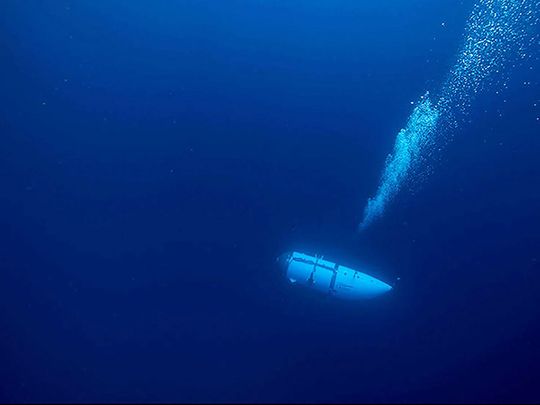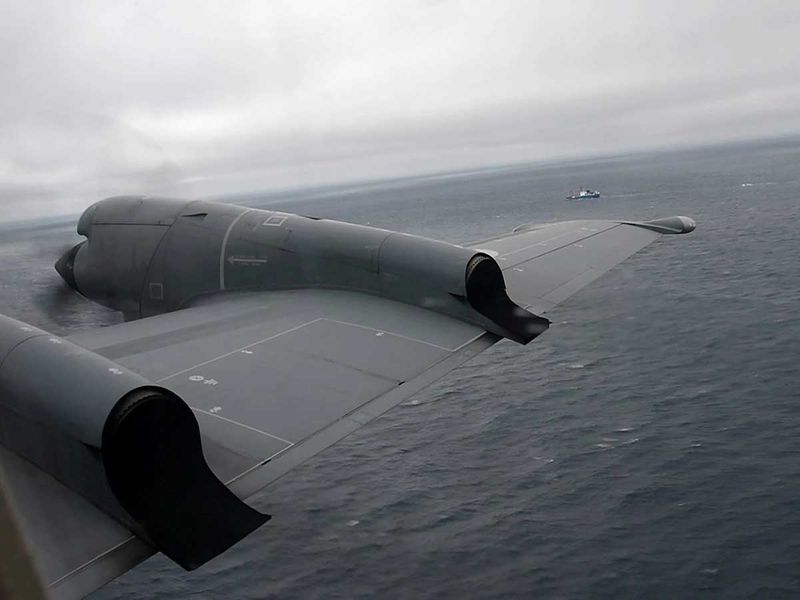
There’s an underwater mini-volcano of sorts — a conical vent that spurts steaming hot water — at the bottom of a waterway in northern Iceland.
I had heard about the geological anomaly on a trip to the island nation in 2009; a decade later, I found myself zipped to the nostrils in neoprene, riding a little dinghy out to sea as it battled the howling arctic wind.
I had spent years touring the world’s legendary reefs as a scuba professional, but rumours of an actual portal to the centre of the Earth had never left my imagination. I bit the mouthpiece of my regulator with anticipation.
My guide cut the engines when we reached the middle of the fjord — we rolled ourselves backward off the bow and slid below the waves. Within seconds, the surface disappeared, the rays of sunshine blocked by the turbid, icy water. Blindly, we descended, following a thin tether that led the way through the blackness.
I almost didn’t resurface
My dry suit malfunctioned — I couldn’t get enough air into the apparatus — and as we continued downward, the accumulating atmospheres of pressure began to crush my body like a python’s strangle.
Had I been a novice diver, I would have shot a hundred feet straight to the surface, gotten the bends and, without a decompression chamber nearby, probably died. Instead, I quieted my instincts, calmed my harried breathing and motioned to my guide, who helped me fix the blockage in my gear.
Despite the scientific improbability, we crave a solvable mystery — we not only want the search-and-rescue teams to find the Titan; we need them to. For if we don’t conceive of their rescue, then we’re forced to imagine a most gruesome end: one in which the missing passengers must grapple with the expiration of their air supply.
Then we lingered a bit, orbiting the submarine chimney. The frigid waters were weirdly warm as we approached the vent’s opening. Only our beams allowed us to decipher the vague shapes of this pale, muted realm. Wolffish flashed their gnarled teeth at my flashlight’s muted glow. My mind began to wander — perhaps we were being watched by other creatures as we made another ring around the small volcano. There was whale song all around.
I haven’t returned to the water since that near-fatal dive in Iceland — I try not to dwell on the experience. But the memory has resurfaced as the news of the missing Titan vessel plays across the media. It has sparked wide attention and obsession, including mine. The mystery. The hubris. The money.
The Michael Crichton-esque fantasy of a possible recovery. And the legend of the Titanic, which, a hundred-plus years on, still manages to find its way into our everyday conversations.
A first hand account
For as long as I can remember, I’ve had conflicting feelings about the sea. When I started diving professionally, I found something mirthful about exploring the shallows. The shining sun of the tropics — the usual setting for my underwater excursions — easily pierced the blue.
Ships wrecked at 50 feet had found a whole new purpose as homes to thousands of critters, and colourful coral bloomed all over the rusted bulwarks. It was like a party I wasn’t invited to, one I desperately wanted to attend.
But the lower depths of the ocean felt different. They spooked me. They were the black canvas on which my imagination painted its darkest fears, and I couldn’t properly fathom the size or what primordial creatures lurked within. It’s the closest thing we have to an alien world — a hostile place requiring much more than the armour of a dry suit to explore.

- OceanGate Titan submersible: Titanic tour leader loved risk and called safety a 'pure waste'
- Missing Titan submersible: UAE residents pray for safe return of Dubai-based British expat Hamish Harding, others onboard
- OceanGate Titan missing: Titanic submersible has seven backup systems to return to the surface
- OceanGate Titan submersible tragedy: US Coast Guard will continue search near Titanic for more clues about what happened to the sub
To visit the ocean floor, thousands of feet beyond the limits of recreational diving, one must be encased in metal to stave off not the slow, serpentine squeeze of pressure, but the instant pulverisation of a hundred atmospheres. The vessels capable of braving the journey are largely windowless, with just one small, opaque porthole and an external light that casts a hazy beam into the murk.
Not that the view matters, because the colour spectrum fades to grey as deep water curbs the wavelengths of light. Curtains of perpetual night subsume the little craft. There’s nothing to see, and images rendered on the computers within are basically akin to photos on our phones.
I wondered for a moment whether such expeditions are rooted in the same desire for bragging rights shared by the spate of passengers launching themselves into space. But space is different — it’s as empty as it is infinite. We stare up at the stars in awe; movies and television allow us to conceive of space as our bright future.
The oceans are our past
Water is our birthright but also a force of great destruction, holding a record of everything it claims. To visit the depths of the ocean is not an act of arrogance, then, but something quite the opposite: an acknowledgement of our obsolescence.
It’s fitting that the desire to blindly careen toward the ocean floor goes hand in hand with our curious obsession with the Titanic. The felled ship, once touted as the world’s greatest, has remained a parable for nature’s power over the mightiest efforts of humankind to assert its dominance over the planet.
But something else is at play as well. Watching the rescue operations for the Titan, I’m reminded of my divemaster training — the coursework that enabled me to climb back out of that fjord a few years ago — and the search protocols we practised to locate a submerged target.
With elongated flutter kicks, we ventured out from our boat in square-shaped patterns, counting our strides as we angled out to sea. At 50 kicks, I felt desperate and poked my head above the waves to check on the rest of the team.
I was surprised to find myself so wickedly far from everyone else; the boat was out of view. Even at the surface, the sea had deceived me with its immensity.
Search for Titan
When it comes to the lost craft, the searchers are combing for it not just in a space roughly the size of Maryland. It’s 12,000 Marylands stacked on top of one another.
Despite the scientific improbability, we crave a solvable mystery — we not only want the search-and-rescue teams to find the Titan; we need them to.
For if we don’t conceive of their rescue, then we’re forced to imagine a most gruesome end: one in which the missing passengers must grapple with the expiration of their air supply. My 15-minute mishap in the waters of Iceland felt like an eternity and still fills me with dread.
We’re capable of imagining so much fear — more horror than might exist in the ocean, even — we’re rapped by our own interpretations of what waits for us at the bottom of sea. But to grasp the hours passing at the bottom of the Atlantic Ocean feels as impossible as bending one’s mind around the infinite vastness of our planet’s primal depths.
Washington Post
Brandon Presser is an adventure travel writer and the author of “The Far Land: 200 Years of Murder, Mania, and Mutiny in the South Pacific.”








